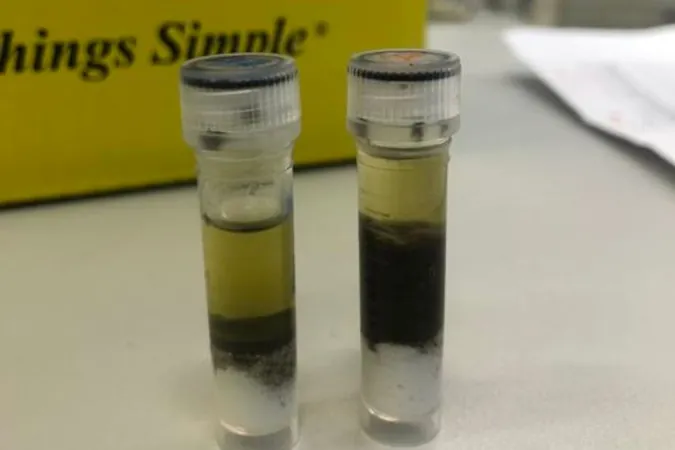
The Looming Threat of Bird Flu: Is Humanity Ready for the Next Pandemic?
2024-11-08
Author: Sarah
Health Officials on High Alert
Health officials are racing against time as they confront the unsettling reality that bird flu, specifically the H5N1 strain, is beginning to spill over into human populations. The Centers for Disease Control and Prevention (CDC) has found itself not only battling the spread of this virus but also struggling to keep up with the testing methods that have been met with skepticism by farmers across America.
A Stark Warning from Experts
Former CDC director Robert Redfield issued a stark warning on a television interview this past June, claiming, “We will have a bird flu pandemic. It’s not a question of if; it’s more a question of when.” His comments highlight the pressing concern that if the virus gains the ability to spread from human to human, a catastrophic pandemic could become a reality.
Undetected Infections in Farm Workers
Recent data from the CDC indicates that many H5N1 infections may be going undetected among farm workers, especially those on dairy farms that had confirmed cases of the virus last summer. A study revealed that out of 115 farm workers tested in Michigan and Colorado, a significant number showed evidence of recent infections through antibodies—yet many couldn't recall any symptoms. This raises alarm bells about the potential for wider spread among American farm workers who may not even know they are infected.
The Need for Aggressive Testing
Experts emphasize the importance of aggressive testing and the distribution of personal protective equipment (PPE) to workers in dairy and poultry environments, particularly as the flu season approaches. Amesh Adalja from Johns Hopkins University states, “There are more people getting infected on farms than the official tally. That’s why we need more aggressive serological testing.”
Current Risk Level and Human Cases
Despite the alarming findings, CDC officials assert that there is currently a low risk of person-to-person transmission. However, as cases of human H5N1 infections are on the rise—particularly in California and Washington—the situation is becoming increasingly critical. Since the onset of the 2024 outbreak, 46 human cases have been confirmed across the nation, with one case in Missouri appearing to have no ties to livestock. Although those infected have generally experienced mild symptoms, the potential for a more severe outbreak looms.
Concerns Among Farm Workers
Compounding the issue, farm workers—many of whom are immigrants—may be reluctant to seek testing due to fears of repercussions or disruption to their livelihoods. The CDC does not have the authority to mandate testing, but public health experts argue that without effective measures, the risk of unnoticed transmission increases.
Challenging Work Conditions
Moreover, the uncomfortable work conditions, particularly in hot and humid milking parlors, deter workers from using PPE. Reports indicate that dairy farm workers in Colorado have found respirators and masks cumbersome, creating a dangerous scenario whereby they work unprotected alongside infected livestock.
The Stakes are High
The stakes are undeniably high. As bird flu has already infected over 446 dairy herds in 15 states and devastated more than 100 million birds, experts are calling for an urgent overhaul in prevention and response strategies. With a reported mortality rate of 52% in Europe since 2002 for certain strains, the need for comprehensive testing, public education about risks, and effective communication has never been more critical.
A Call for Improved Coordination
While the current strain of H5N1 in the US may not appear as severe as past variants, the worrying reality is that the systems in place have been insufficient in preemptively addressing this escalating threat. Experts urge, “We should treat this as a trial run," indicating a crucial need for improved veterinary and public health coordination.
Conclusion: A Race Against Time
The clock is ticking, and the world must act quickly to mitigate the possibility of yet another pandemic. Will we heed the warnings, adapt our strategies, and fortify our defenses in time to protect ourselves and our livestock? The future could very well depend on it.



 Brasil (PT)
Brasil (PT)
 Canada (EN)
Canada (EN)
 Chile (ES)
Chile (ES)
 España (ES)
España (ES)
 France (FR)
France (FR)
 Hong Kong (EN)
Hong Kong (EN)
 Italia (IT)
Italia (IT)
 日本 (JA)
日本 (JA)
 Magyarország (HU)
Magyarország (HU)
 Norge (NO)
Norge (NO)
 Polska (PL)
Polska (PL)
 Schweiz (DE)
Schweiz (DE)
 Singapore (EN)
Singapore (EN)
 Sverige (SV)
Sverige (SV)
 Suomi (FI)
Suomi (FI)
 Türkiye (TR)
Türkiye (TR)